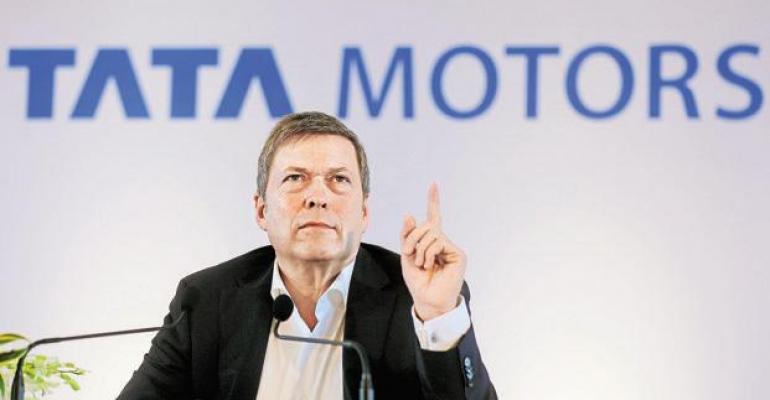MUMBAI – Tata is into the second year of the 3-year recovery plan fashioned by Guenter Butschek and, while the statistics don’t yet reflect his goals, the CEO and managing director of India’s No.4 automaker remains focused on enhancing internal operations, technology and competitiveness.
Butschek’s immediate task is to reverse a decline in car sales that fell more than 50%, from 667,626 in 2012 to 321,863 in 2016. Market share also was more than halved in that period, from 20.3% to 9.4%, and exports last year came to just 60% of their 2012 level.
Tata’s financial performance was equally poor; profits plummeted 81% from Rs12.4 billion ($184 million) in the 2012 fiscal year to Rs2.3 billion ($35 million) in fiscal 2016, interrupted by a Rs47.4 billion ($700 million) loss in fiscal 2015.
In each of those four years Tata had a new CEO to fill vacancies caused by resignation, retirement or death, starting with the apparent suicide of 17-year General Motors veteran Karl Slym in January 2014.
Recognizing Tata was in trouble because its cars were perceived negatively, Slym embarked on a plan to immediately launch six new models with design and engine-development help from the automaker’s Jaguar Land Rover subsidiary.
To achieve a long-term goal of reclaiming the title of India’s No.2 automaker from Hyundai (behind Maruti Suzuki), Slym planned fresh investment of Rs150 billion ($2.3 billion), a contemporary compact SUV, improved quality, global sourcing to reduce costs and reaching out to mature global markets.
But all of those initiatives stalled with Slym’s death. Sales and profits continued to decline before a marginal upswing in 2014 was wiped out by the huge loss of 2015.
Tata’s current financial picture will not come into focus until March 31, when it reports its fourth-quarter and full-year fiscal-2017 performance. The automaker absorbed a 96% decline in third-quarter revenues due to losses in India and a drop in JLR global revenues.
Butschek, who came to Tata after holding executive positions with Airbus and Daimler, is integrating portions of Slym’s original plan into a new 3-year strategy called HorizoNext, with the more modest goal of surpassing Mahindra & Mahindra to become India’s No.3 automaker.
HorizoNext includes introducing two new brands or models in each of the three years, launching vehicles that are technologically sophisticated and more attractive, particularly to a younger generation of buyers; developing three R&D centers, including one in Silicon Valley in the U.S.; and to make Tata employees at every level aware of the company’s quality, profitability, market-share and sales-rankings targets.
Tata’s focus on both the present and future are encapsulated in the slogan for its cars’ design language: “Immediate Impact at First Sight: Lasting Impact over Time.”
Tata also has reached a deal with Volkswagen Group, the world’s No.1 automaker, to jointly develop vehicles and components for India and other global developing markets. Low-cost VW brand Skoda will participate on behalf of Volkswagen, which will gain an opportunity to reach markets in the interior of India.
As Tata tries to reverse its losses by introducing new vehicles and improved efficiencies to meet the changing demands of customers, particularly younger ones, Volkswagen can contribute to both.





